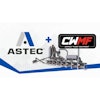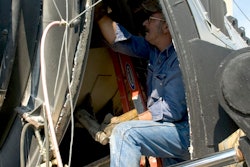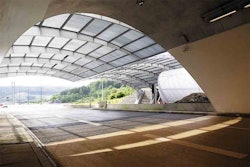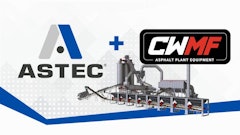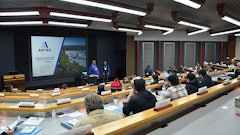
I was going to write this issue's column on burner tuning procedures, but in the last two months, I have repeatedly ran into an issue as I traveled around the country helping people with plant problems. I will outline the steps for proper burner tuning in the near future.
For now, I want to talk about what I consider the most important failures in plant maintenance and repair - indecision.
Last month, I was at a counter-flow plant with a mixing drum in the Southwest and was a little nonplussed to see that they had a tote, a square container moved around with a forklift, parked under the discharge end of the drying drum.
When they started the plant up there was nearly a steady stream of aggregate spilling out of the drum seals which were nearly destroyed. The tote filled up twice a day under high production.
“How long has that leaked like that?” I asked.
“Since before I started here last year,” the operator answered.
“Why don’t you fix it?” I asked.
“I put the tote under it so we don’t have to shovel much now,” was his answer.
“That’s your idea of fixing it?” I asked.
“I don’t know how to fix it,” he finally admitted.
“Ok, I’ll look at it and see what you need to do,” I said.
This particular operator’s sentiment is far more common these days than it was back when I was running plants for a living. If we saw something wrong we addressed the problem.
Even if we didn’t know how to fix it we tried SOMETHING. We made a decision and moved forward. If that didn’t work we tried something else.
Like one old guy told me a long time ago, “The road is paved with flat squirrels that couldn’t make a decision.”
I thought it was funny back then, but now I can see that this guy was exactly right. Make a decision, act on it and don’t be afraid to be wrong. I am wrong occasionally. Unless you listen to my wife, then occasionally changes to often.
Once I walked out to the drying drum that drum’s issue was immediately obvious to me. Someone had slotted the bolt holes for the uphill thrust roller which controls drum’s upper positional limit. This allowed the drum to travel farther up the drum-frame on the trunnions than the factory had designed it to.
I could see that only about half of the trunnion’s face was riding on the tire. We all know that this condition will lead to big problems in the future. The drum shell should be well inside the discharge breaching. If not? Well, it’ll leak aggregate and you’ll need to stick a tote under it so you didn’t spend all day shoveling.
A quick look at the leaking end of the drum revealed that I could actually see the end of the drum shell. The aggregates were given an open path to the ground. No amount of seals were going to fix this issue.
When they were done running for the day, I took the plant people out and showed them just exactly why they needed a tote under the drum. I explained how moving the uphill thrust roller had allowed the drum to move too far away from the sealing system on the outlet end of the drum.
I explained what the root problem was: poorly adjusted trunnions forcing the drum too far up. We trained the trunnions correctly then turned the drum on. The drum immediately ran downhill.
We then moved the uphill thrust roller back to its factory position. They had a new set of drum seals so we replaced the bottom ones. There was a lot of metal damage but I determined that the damage was not extensive enough that it could not wait for winter maintenance.
I had to wait until the next day to see how the repair worked. We were rewarded with a perfectly sealed drum.
I explained to the plant personnel that there is never a time that you should run an asphalt plant with some kind of jury-rigged solution to a maintenance problem. Make a decision, do SOMETHING, if it doesn’t work then make a mental note not to do that again. Then try something else. Don’t be indecisive like the flat squirrels on life’s highways.

